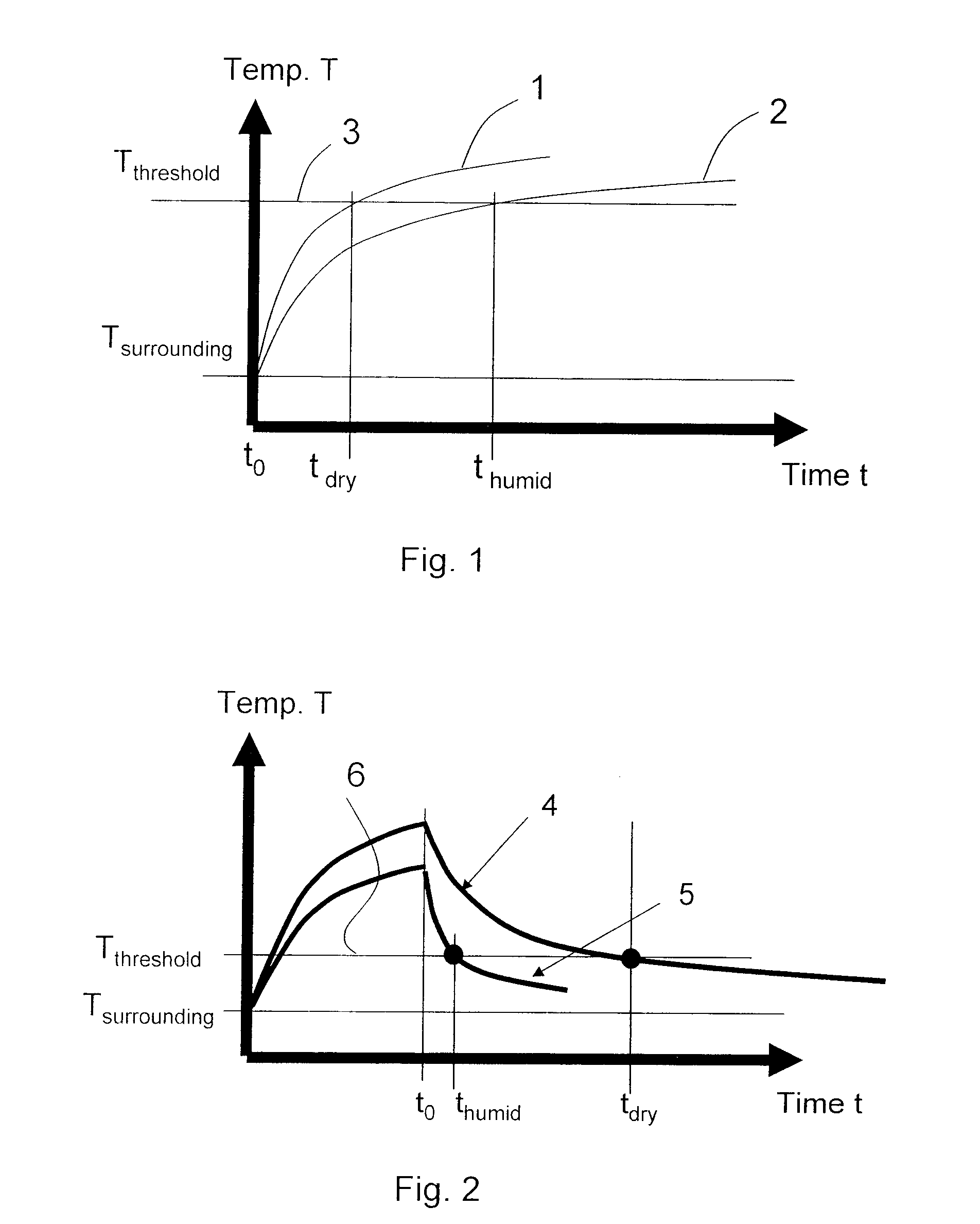Device for measuring thermal properties in a medium and method for determining the moisture content in the medium
a technology of thermal properties and devices, applied in the direction of automatic control, process and machine control, instruments, etc., can solve the problems of not being able to apply for determining ground humidity, unable to achieve direct, gas-permeable connection, and unable to achieve the effect of determining ground humidity, and achieving low set-up costs, simple assembly and operation
- Summary
- Abstract
- Description
- Claims
- Application Information
AI Technical Summary
Benefits of technology
Problems solved by technology
Method used
Image
Examples
Embodiment Construction
[0084]FIG. 1 shows a typical curve course of the temperature on evaluating a heat-up phase with a high and low humidity in a ground sample. A curve 1 shows the temperature course for a substrate with a low moisture content, a further curve 2, the temperature course for a humid substrate. Thus two times, tdry or thumid, corresponding to the crossing points of the threshold value with the two curves 1, 2, may be allocated to a temperature threshold value 3, and an action may be triggered on falling below a critical time.
[0085]FIG. 2 shows a typically curve course of the temperature with the evaluation of a cooling phase, with a high and low humidity in a ground sample. A curve 4 in turn shows the temperature curve for a substrate with a low moisture content, and a further curve 5 shows the temperature course for a humid substrate. Again two times, tdry and thumid given by the crossing points of the threshold value with the declining branch of the two curves are allocated to a given te...
PUM
| Property | Measurement | Unit |
|---|---|---|
| thickness | aaaaa | aaaaa |
| thicknesses | aaaaa | aaaaa |
| time | aaaaa | aaaaa |
Abstract
Description
Claims
Application Information
 Login to View More
Login to View More - R&D
- Intellectual Property
- Life Sciences
- Materials
- Tech Scout
- Unparalleled Data Quality
- Higher Quality Content
- 60% Fewer Hallucinations
Browse by: Latest US Patents, China's latest patents, Technical Efficacy Thesaurus, Application Domain, Technology Topic, Popular Technical Reports.
© 2025 PatSnap. All rights reserved.Legal|Privacy policy|Modern Slavery Act Transparency Statement|Sitemap|About US| Contact US: help@patsnap.com



